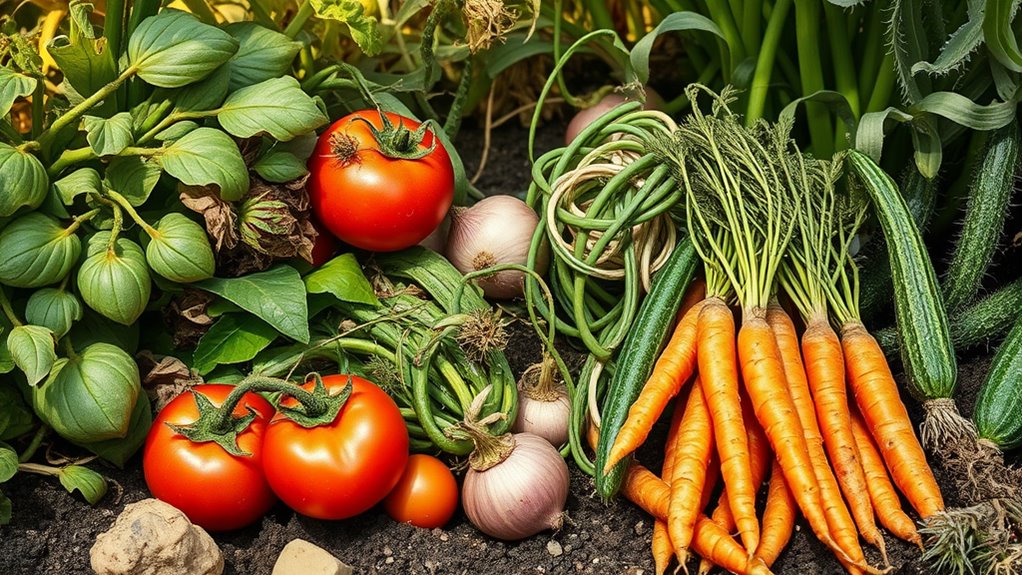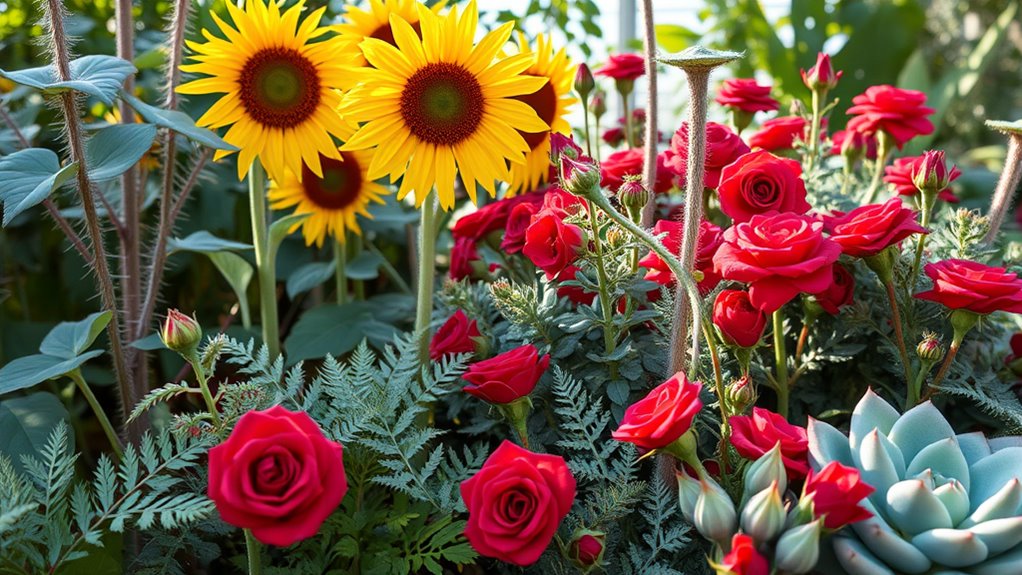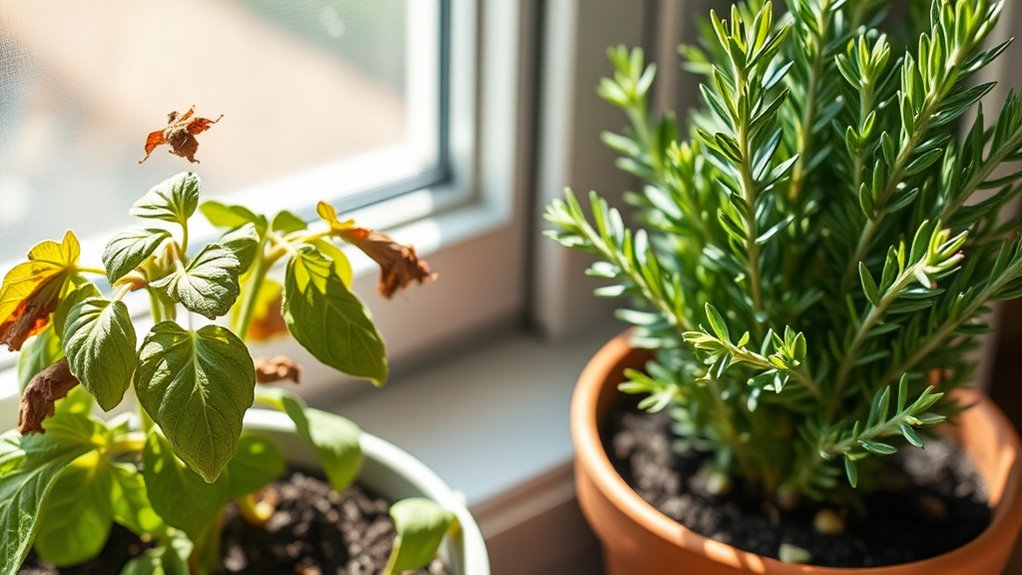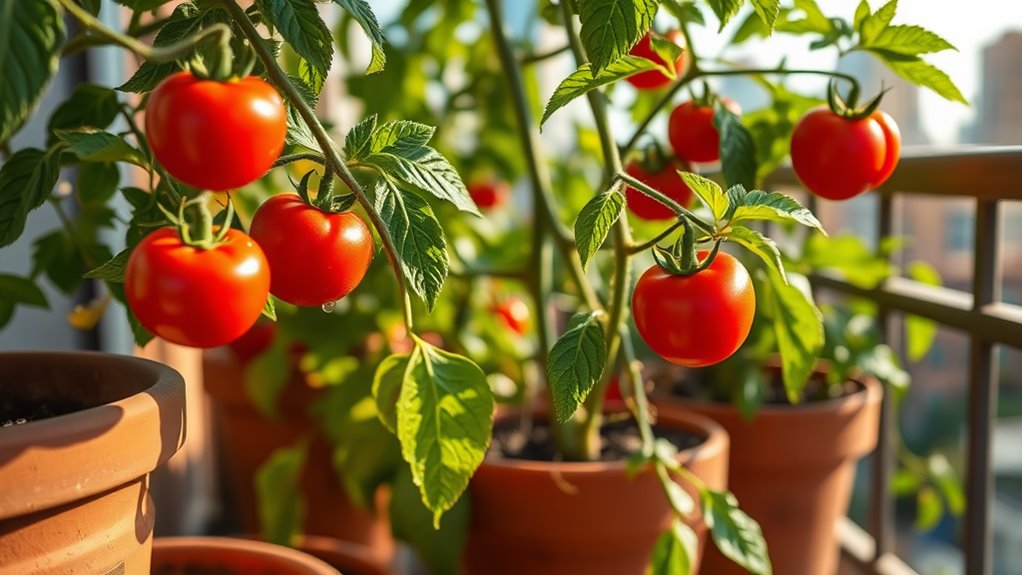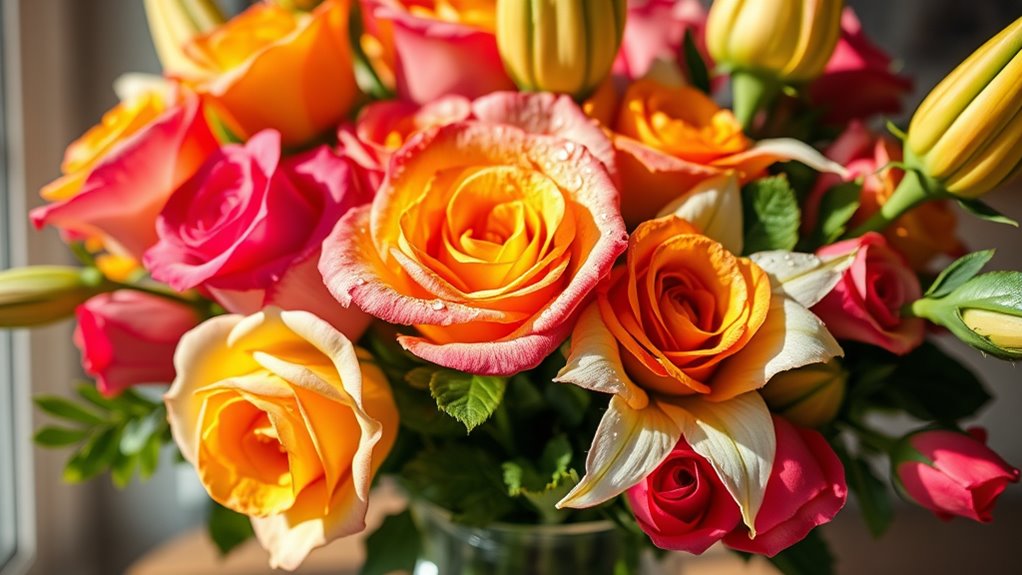6 Vegetables That Hate Each Other – Never Plant Them Side by Side
When you’re planning your garden, you’ll want to avoid these six veggie pairs to prevent stunted growth and pests. Don’t plant tomatoes with potatoes, as they share diseases and bugs. Keep beans away from onions, which compete for nutrients and inhibit growth. Carrots and dill stunt each other, so space them out. Cucumbers and potatoes fight over resources, while peppers harm fennel through chemicals. Cabbage and strawberries attract the same pests. Explore these conflicts further for thriving yields.
Key Takeaways
- Avoid planting tomatoes with potatoes, as they share pests and diseases.
- Do not pair beans and onions, as they compete for nutrients and stunt growth.
- Keep carrots away from dill to prevent reduced yields from growth inhibitors.
- Separate cucumbers and potatoes to avoid competition for water and space.
- Avoid planting peppers near fennel, as peppers release chemicals that inhibit fennel growth.
Tomatoes and Potatoes: A Toxic Duo
Because tomatoes and potatoes belong to the same nightshade family, you’ll often see them sharing pests and diseases that can wreak havoc in your garden.
In vegetable companion planting, pairing them is a mistake that invites issues like Colorado potato beetles and early blight, weakening both crops.
To protect your harvest, keep these plants at least 4-5 feet apart or in separate garden beds.
Rotate their locations yearly to disrupt pest cycles, ensuring healthier growth and reducing chemical needs.
Incorporating specific plant combinations can further enhance your garden’s defenses against shared threats.
This simple strategy prevents cross-contamination and saves you time and effort.
This issue highlights the importance of companion planting for avoiding such conflicts in your garden.
Beans and Onions: Growth Inhibitors
When you plant beans near onions, you’ll stunt the beans’ growth and reduce onion yields through their competing demands.
This interaction highlights how nutrient competition effects can disrupt both plants’ development.
Understanding nutrient competition is key to successful gardening.
You can avoid these issues by separating them in your garden for better results.
Meanwhile, for enhanced garden productivity, explore companion planting strategies that promote thriving plant pairings.
Bean Growth Stunt
Beans and onions, despite their garden popularity, often clash when planted together, as onions release growth-inhibiting compounds that stunt bean development. You’ll see beans struggle with reduced height, fewer pods, and weaker roots when onions are nearby, hampering your harvest. To avoid this, plant them apart and rotate crops annually for healthier yields.
| Factor | Impact on Beans | Practical Tip |
|---|---|---|
| Soil Compounds | Stunts root growth | Test soil pH before planting |
| Light Competition | Slows photosynthesis | Space plants for full sun |
| Nutrient Uptake | Reduces nitrogen fix | Use companion plants like carrots |
| Water Absorption | Weakens overall vigor | Mulch to retain moisture |
Onion Yield Loss
Onions often suffer yield loss when planted near beans, as the latter release growth-inhibiting compounds that hinder bulb development.
You might see stunted growth and reduced harvests in your garden, so it’s smart to separate them.
Here’s how you can prevent this issue:
-
Space them out: Plant onions at least 2-3 feet away from beans to minimize compound exposure.
-
Rotate crops: Avoid planting onions in the same spot where beans grew last season.
-
Choose alternatives: Pair onions with compatible veggies like carrots or lettuce instead.
Nutrient Competition Effects
While beans and onions compete for soil nutrients, beans release specific inhibitors that can stunt onion growth and reduce overall yields.
Both plants crave nitrogen, so you’ll find beans outcompeting onions, quickly depleting the soil and leaving your onions nutrient-starved. These inhibitors, like allelopathic compounds from beans, directly suppress onion root development and bulb size, resulting in weaker plants and lower harvests.
To avoid this, plan your garden wisely: separate beans and onions by at least a few feet or use different beds. Instead, pair beans with corn for mutual benefits, and team onions with tomatoes to minimize rivalry and boost your garden’s success.
Carrots and Dill: Unfriendly Neighbors
When planting carrots and dill together, you’ll quickly see they don’t get along, as dill’s compounds can stunt carrot growth and vice versa. This allelopathic interaction harms both plants, reducing yields and inviting pests.
To avoid these issues, follow this simple guide:
-
Separate them spatially: Plant carrots at least 2-3 feet away from dill to minimize chemical interference.
-
Rotate crops yearly: Keep dill in a different bed each season to prevent soil buildup of inhibitory compounds.
-
Choose alternatives: Pair carrots with friendly veggies like onions, while dill works well with cabbage for better garden harmony.
Cucumbers and Potatoes: Resource Competitors
Cucumbers and potatoes often clash in your garden as they compete fiercely for water, nutrients, and space. Both are heavy feeders, quickly depleting soil resources and leaving each other stunted and unproductive.
Cucumbers’ vigorous vines sprawl widely, crowding potatoes and blocking sunlight, while potatoes’ extensive roots hog moisture and minerals. You’ll end up with poor yields, misshapen produce, and higher disease risks from stressed plants.
To prevent this, separate them by at least 3-4 feet or plant in different areas. Rotate these crops yearly to restore soil balance and boost overall garden health. Moreover, as part of effective gardening preparation, planning garden layout can help ensure these plants are positioned optimally to avoid competition.
Monitor watering to avoid shortages, ensuring each thrives independently.
To further protect your garden from external factors like unpredictable weather, consider applying seasonal strategies that have proven effective in maintaining crop resilience.
Peppers and Fennel: Allelopathic Enemies
You notice how peppers and fennel release allelopathic chemicals that directly impact each other’s health.
These chemicals cause growth hindrance, stunting development in both plants.
That’s why you should understand the planting conflict reasons to avoid pairing them in your garden.
Allelopathic Chemical Impact
Because peppers release allelopathic chemicals, they actively inhibit fennel’s growth when planted close together.
You’ll find these compounds interfere with fennel’s seed germination and root development, making your garden less productive.
To handle this impact effectively:
- Test your soil: Check for chemical residues before planting peppers nearby.
- Observe early signs: Watch for yellowing leaves on fennel as a red flag.
- Rotate crops: Plan your layout to separate these plants annually.
This knowledge helps you avoid conflicts and optimize your vegetable patch.
Growth Hindrance Effects
As peppers emit allelopathic compounds, they directly stunt fennel’s growth, disrupting seed germination and root establishment in your garden.
You’ll notice fennel’s seedlings struggling to emerge or dying off early, as these chemicals inhibit nutrient uptake and weaken overall vigor. This leads to poor yields and patchy growth, forcing you to separate plants for better results.
To avoid this, monitor your plots closely; if fennel’s leaves yellow or wilt near peppers, relocate it immediately.
Practically, this means planning rotations to protect your harvest and maintain a healthy ecosystem.
Planting Conflict Reasons
Peppers release allelopathic compounds that directly clash with fennel, creating planting conflicts through chemical warfare in your garden.
These substances inhibit fennel’s growth, leading to weaker plants and lower yields if you plant them nearby.
-
Stunt development: Peppers’ compounds suppress fennel’s seedlings, slowing your garden’s progress and reducing harvests.
-
Disrupt soil health: They alter soil chemistry, making it harder for fennel to absorb nutrients, which affects your overall crop quality.
-
Increase competition: Both plants vie for resources, forcing you to separate them to avoid poor performance and wasted space.
Cabbage and Strawberries: Pest Magnets
When you plant cabbage and strawberries together, they both act as pest magnets, drawing in aphids, slugs, and other insects that can devastate your garden quickly.
Aphids feed on their sap, stunting growth, while slugs munch leaves, spreading disease. You’ll notice infestations escalate, as these plants share similar vulnerabilities, making control harder.
Instead, separate them: pair cabbage with onions to deter pests, and surround strawberries with marigolds for natural repulsion.
This simple strategy keeps your garden healthier, boosting yields and reducing chemical needs for a more sustainable setup. Furthermore, utilizing natural pest control can help maintain a balanced ecosystem and minimize pest issues over time.
Additionally, integrating natural herbs into your garden can enhance pest deterrence by leveraging plants like basil or mint for added protection.

